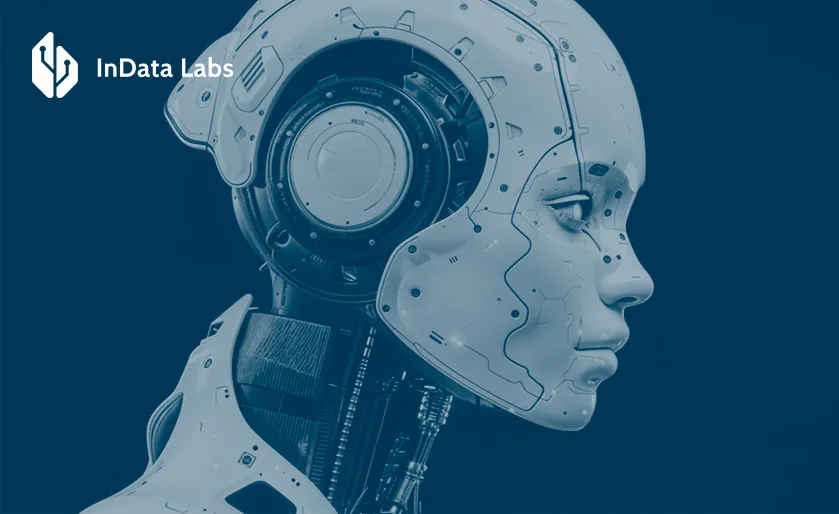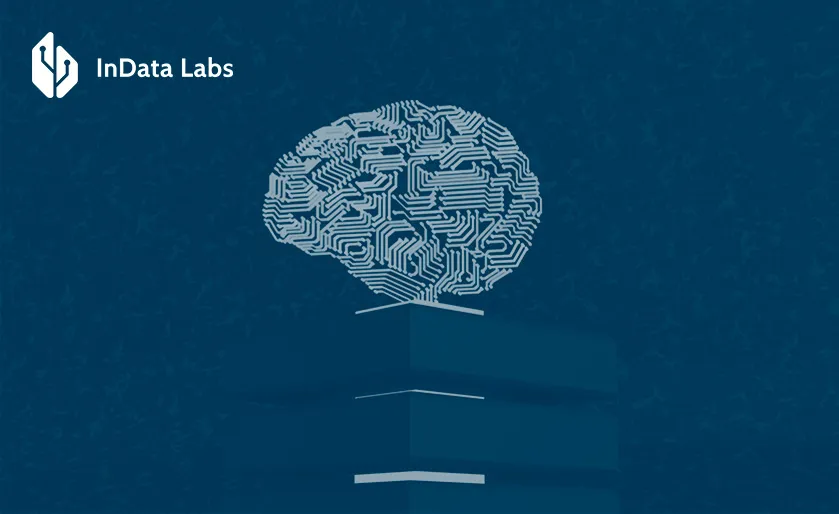The further technologies are modified, the more people and enterprises become connected to them and, in most cases, are completely uninformed about their negative aspects. It directly concerns machine learning and artificial intelligence companies as well. This means that leaders must be aware of the potential downsides and pitfalls of artificial intelligence and machine learning in advance.

Source: Unsplash
Before implementing LLM and machine learning techniques in your processes, it is best to avoid getting ahead of yourself and instead be attentive, alert, and prepared for machine learning risks. Companies are better prepared if they are forewarned.
Organizations can make better decisions about how to innovate while ensuring they properly consider their responsibilities if they are aware of the challenges upfront. Without that knowledge, we might not be able to properly allocate our resources to prevent waste or the production of unforeseen or random outcomes. In this article, we will explore common pitfalls and provide recommendations for effective machine learning use.
Potential AI and machine learning pitfalls
Generative AI development emerged as one of the cutting-edge technologies during the last ten years. Its scale of use is astounding. However, according to the statistics, 42% of companies are worried about investing in AI because its future is unknown. Let’s look into some viable artificial intelligence hazards.
Job redundancy
In the present-day scenario, where machine learning solutions are being harnessed everywhere, there is a widespread concern about job losses. Due to the automation of operations in various sectors, including medicine, economics, education, and marketing departments, among others, machine learning development has impacted the staff.
For instance, AI chatbots are able to do the same tasks but with one significant difference: speed. They are more accurate and very rapid in comparison with human abilities. That is why leaders don’t miss the chance to have and deploy such a tool in order to go on the market faster. This is the reason many people will likely lose their jobs.

Source: Unsplash
But the new jobs will appear, especially connected with AI itself. As stated in the data, it is complicated to find an appropriate, skilled workforce. Fifty-six percent of organizations agree with this. Companies are having trouble finding workers for AI-related positions because the field is developing so quickly.
Moreover, it is challenging for businesses to locate employees with the necessary abilities to use AI efficiently. Thus, an AI specialist is one of the most important vacancies in demand nowadays.
Deficiency of transparency
The generative AI and its models are considered to be brilliant problem-solvers. But what are some pitfalls of generative AI? One more pitfall of generative AI is its systems and machine-learning model risk. They are very impactful, but in spite of that, they could be tough to understand, even for experts in the technological sector. It provokes a tangible effect on the clarity of artificial intelligence and what data is driving these decisions. As a result, algorithms bring about prejudice and insecure conclusions.
Privacy challenges and social observation
As artificial intelligence advances, the pitfall related to people’s privacy enlarges. With a view to being up-to-date and enhancing the business process, establishments apply to a machine learning consulting firm to make the office work easier, for example, with the use of eye or face recognition.

Source: Unsplash
In China, it is really common for a company to possess private information of its employees, as biometric surveillance and monitoring systems are widely implemented. These kinds of activities are where stringent observation and monitoring are frequently regarded as the norm.
In addition to this, tracking a person’s movement is also controversial, which evokes algorithmic errors. Nowadays, we can find a lot of information about medicine, financial data origins, or even the backgrounds we need. However, with an experienced team, machine learning companies can prevent this AI pitfall, including leakage of personal data of their workers, and adhere to security rules.
Limitations of ethical principles
The extensive use of AI in daily life and machine learning in business analytics and consulting fields may compromise ethical standards. Public concern about it is still on the rise.
For instance, Pope Francis addressed this problem at the time, stating that there are hazards associated with AI being used to violate through the exploitation of AI’s efficiency. In the end, he emphasized, this can enlarge the risk of disputes by supporting disinformation campaigns, mistrust of communications media, election meddling, and so on.
Furthermore, AI pitfalls related to robotic surgery are extensive. While some automation can enhance precision and reduce portion error, ethical questions will arise when and if errors occur: who should be held accountable for mistakes—the manufacturer, the software developer, or the medical professional conducting the procedure?
Social deception with an AI algorithm
Popular applications, in particular TikTok, are exploited to persuade people into their ideas and aims by not only ordinary people but also by politicians to follow their opinions. To discern whether it is true information or AI-generated has turned into a real challenge. Consequently, manipulation of this kind can’t protect the audience from flawed and misleading news.
That is a very important AI pitfall to avoid, but due to progress in AI images, voice, and video messages, it is hard not to believe and distinguish the verifiable and false reports. Ford remarked that no one can tell what is real and what isn’t. It’s dangerous indeed when it is associated with politics, army forces, public figures, and religion.
Imbalance of social class in economics
The rise of AI has elicited dissimilarity in society for the most part because of its biased structure and algorithms. For instance, facial and voice analysis tools may accentuate previous data imbalances, locking in characteristics the organization hopes to change, because there was not enough up-front design and auditing.
Of course, embedding bias detection methods and diverse training datasets, and conducting your own or independent third-party audits, can better position businesses to facilitate AI recruiting tools that are a force for greater fairness.

Source: Unsplash
Another AI pitfall to consider is the socioeconomic impact of AI-driven automation. Due to automation, only workers engaged in widely repetitive or manual tasks saw wages fall.
However, generative AI consulting is already beginning to affect certain knowledge-based roles. These economic shifts highlight the importance of workforce planning, reskilling, and equitable AI deployment to ensure that innovation does not create the greatest disruption to specific employees.
Growth in lawbreaking and crimes
Last but not least, criminal actions on the internet are among the pitfalls of AI that need to be avoided. AI capabilities have become available, which has affected criminals who break the law now online. The use of AI voice copying applications for prank purposes is gradually evolving into the use of AI for criminal purposes and deception.

Source: Unsplash
One of the widespread kinds of crimes using AI is fake telephone calls to steal money or other cheats. Despite the fact that AI doesn’t allow for physical harm, it breaches security regulations and violates individuals’ privacy. It is becoming harder and harder to find real criminals nowadays.
Alongside voice crimes, AI hazards connected with images and fake videos are rapidly growing, too. More often, people believe in AI-powered pictures and fraudulent photos because they can be so real, and it is difficult to differentiate them. Given the limited scope of AI’s potential, public agencies will need to intensify their efforts to adapt and provide timely updates on the rapidly evolving risks associated with AI.
How to overcome AI and machine learning pitfalls?
Undoubtedly, artificial intelligence offers a multitude of benefits that have significantly improved society’s well-being and made work processes more efficient and productive.
However, the current progress of artificial intelligence is not the final stage, and extensive oversight is necessary. The question comes up: what might we do to mitigate the AI hazards, and how do we avoid machine learning pitfalls?
Setting up AI guidelines and open forums
If enterprise leaders have decided to adopt AI into their operations, there are several steps to take to ensure a smooth implementation. Adoption of artificial intelligence can be cohesive with its possible machine learning risk prediction at the same time.
Thanks to the establishment of specific AI guidelines and standards to follow, programmers can observe algorithms and better understand their results, as well as mitigate potential AI hazards.
What is more, it is a must to commence the work of acceptable AI that will not violate not only ethical principles but also cultural ones. Open forums within the AI company help to solve the problem of the tolerant use of technology as well. As a result, the company can reap profits from the opportunities provided without unexpected breaches and mitigate biased issues.
Global humanitarian AI approach
As concerns the public and the community itself, there ought to be a fostering and grasping of the newest technologies from the humanitarian side. It is vital to call people to regulate and control the development of artificial intelligence in every domain. The programmers of AI must take into account the economic and political situation, racial differences, and cultural and ethical points. On top of that, the sector where machine learning pitfalls might occur includes medicine, law, and many others.
The best way to create responsible AI technology and make sure the future of AI is bright for the coming generation is to strike a balance between cutting-edge innovations and people’s way of how they see the world.

Source: Unsplash
Despite all of these, the AI information hazard will always be at the center of social disputes and subject to matters. But some steps to avoid them are happening; for example, this spring, a framework of all possible AI risks and ranked applications from low to unacceptable risks was established with its AI Act in the European Union. It also prohibited uses like real-time facial recognition in public areas and placed stringent restrictions on the use of AI in high-risk fields like medical management, the education sector, and law.
Empowering through education and creativity
The way forward is not about stopping progress but facilitating it. Another important step is to enhance people’s ability to utilize artificial intelligence techniques and machine learning projects as an auxiliary agent.
Besides, the goal here is to ensure that AI is adopted and not understood as a hurdle, and promoting digital literacy, training, and awareness programming can help. Educational activities support employees and citizens in understanding how AI works and developing confidence in its outputs, as well as the ability to use it equitably in everyday life.
Simultaneously, people’s creative use of AI, such as design and research, opportunity exploration, and problem surfacing, enables them to discover new possibilities. Moreover, this is not only technology avoiding facing its blind spots but also sparking innovation and providing society with confidence as it goes forward.
Wrapping up
To sum up everything, there is the opposing side of artificial intelligence. With its pros and cons, it can still do good if it is in the right hands. It refers to specialists and programmers of high quality who are able to control and promote machine learning to positive results and get rid of mundane tasks, assisting the staff in focusing on more vital duties.
Nevertheless, advances in AI are needed as it continues to launch new opportunities and allows companies to apply them effectively in practice. In addition, further progress in AI is unavoidable, and knowing machine learning pitfalls prevents negative surprises, such as fraud detection, and gives a chance for developers to manage it wisely, taking into account all social norms and economic nuances.
In the end, the future of AI depends completely on whether humans choose to develop and deploy it responsibly. Balancing innovation and ethics will dictate whether AI will end up as a tool for development or a reminder of the troubles we, as a society, must operate responsibly. Cautious, transparent, and collaborative developments of any artificial intelligence will lead to a future that helps to promote the greater good of society.
Furthermore, as artificial intelligence develops, it will be important to encourage ongoing conversations across policymakers, businesses, and researchers to help make guidelines that encourage innovation but also protect society from surprises. If harnessed responsibly and with vision, machine learning tools can not only be the next wave of technology but also help reshape industries, improve life quality and society, and help solve global issues.
FAQ
-
While AI has the potential to be disruptive, there are common barriers to implementation, such as biased training data, failures of interpretability and transparency, and reliance on automation without human input. The spread of AI pitfalls can be reduced by a diverse range of data, explainable AI tools, and human-in-the-loop decision-making. With experienced teams and strong quality controls, the risks are manageable.
-
Machine learning can experience obstacles such as overfitting (when models perform extremely well on training data but poorly in operation), insufficient or poor-quality data, and being in an environment that continually changes.
Yet, state-of-the-art ML practices, continuous monitoring of models, data validation pipelines, and adaptive retraining can help to alleviate these concerns.
-
Risks involve the chance of making unrealistic predictions, undesirable bias, and susceptibility to cyber risks if systems are not properly secured.
While there are risks involved, AI and ML can function in a safe and reliable manner in many applications across sectors when they are created in conjunction with testing, good cybersecurity, and ethical principles.
-
The biggest challenge is trust, as users need to understand and trust the outputs produced by AI. Building trust is done through transparency, explainability, and alignment with legal and ethical frameworks. These can become opportunities to reinforce AI’s value as a trusted partner.
-
AI ethics is often about balancing innovation against fairness, privacy, and accountability. The real challenge arises when technology grows faster than regulatory mechanisms or oversight. The answer, however, is responsible use of AI; we have an opportunity to build in accountability measures that include technological best practices, transparent policies, and multidisciplinary collaboration to enable AI’s positive contributions while limiting harms that were unintended.
-
AI models are incredibly effective within the scope of their training, but they can struggle in situations that are ambiguous or unfamiliar. They also need quality data to learn from and computational power to be effective. Noting these limitations is important.
By combining AI with human knowledge and experience, continuous learning, and domain-specific settings, we can substantially manage these limitations.



